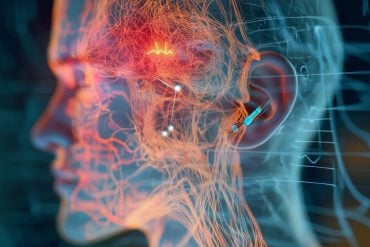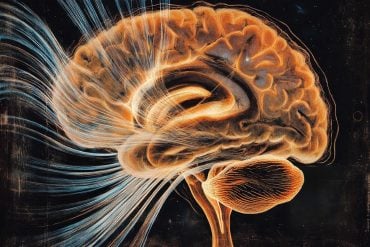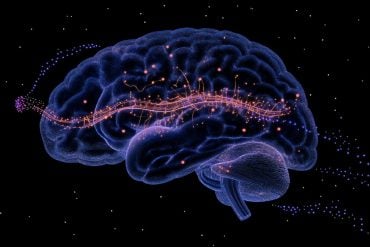Summary: Researchers developed a light-sensitive drug that enhances adenosine activity in the brain, inducing sleep in mice without genetic modification. This innovation overcomes the limitations of conventional photosensitive drugs, offering precise control over sleep and motivation via A2A receptors.
The study highlights the potential of optochemistry in brain-specific drug targeting.
Key Facts:
- Innovative Approach: Light-sensitive drug induces sleep by targeting brain A2A receptors.
- Overcoming Limitations: New drug avoids issues like phototoxicity and blood-brain barrier permeability.
- Research Funding: Supported by WPI, Japan Science and Technology Agency CREST Grant, and AMED.
Source: University of Tsukuba
The nucleus accumbens plays a pivotal role in motivational behavior and sleep regulation, modulated by adenosine A2A receptors (A2AR). Hence, selective A2AR regulation within this brain region could control sleep and motivation.
However, A2ARs are distributed across various organs, including the heart, posing challenges for precise brain-specific modulation without genetic interventions.

A research team led by Professor Michael Lazarus and Associate Professor Tsuyoshi Saitoh (TRiSTAR Fellow) from the Institute of Medicine and the International Institute for Integrative Sleep Medicine (WPI-IIIS) at the University of Tsukuba delved into optochemistry. They aimed to develop a novel light-sensitive drug that enhances extracellular adenosine activity.
By administering this drug to mice and selectively irradiating the nucleus accumbens with light, they succeeded in inducing sleep artificially without genetic modification for the first time.
Conventional photosensitive drugs have faced hurdles in mammals and other living organisms due to problems such as phototoxicity caused by ultraviolet light, blood-brain barrier permeability, and photoreaction efficiency.
The newly developed photosensitive drug overcomes these issues, showcasing optochemistry’s potential in developing drugs targeting A2AR in the brain and regulating brain function by targeting other central drug receptors.
Funding: This research was conducted as part of a research project funded by the World Premier International Research Center Initiative (WPI), Japan Science and Technology Agency CREST Grant (JPMJCR1655), Grants-in-Aid for Scientific Research (JP21H02802, JP23H04148), and AMED (JP21zf0127005).
About this neurotech, neuropharmacology, and sleep research news
Author: YAMASHINA Naoko
Source: University of Tsukuba
Contact: YAMASHINA Naoko – University of Tsukuba
Image: The image is credited to Neuroscience News
Original Research: Open access.
“Optochemical control of slow-wave sleep in the nucleus accumbens of male mice by a photoactivatable allosteric modulator of adenosine A2A receptors” by Michael Lazarus et al. Nature Communications
Abstract
Optochemical control of slow-wave sleep in the nucleus accumbens of male mice by a photoactivatable allosteric modulator of adenosine A2A receptors
Optochemistry, an emerging pharmacologic approach in which light is used to selectively activate or deactivate molecules, has the potential to alleviate symptoms, cure diseases, and improve quality of life while preventing uncontrolled drug effects.
The development of in-vivo applications for optochemistry to render brain cells photoresponsive without relying on genetic engineering has been progressing slowly.
The nucleus accumbens (NAc) is a region for the regulation of slow-wave sleep (SWS) through the integration of motivational stimuli. Adenosine emerges as a promising candidate molecule for activating indirect pathway neurons of the NAc expressing adenosine A2A receptors (A2ARs) to induce SWS.
Here, we developed a brain-permeable positive allosteric modulator of A2ARs (A2AR PAM) that can be rapidly photoactivated with visible light (λ > 400 nm) and used it optoallosterically to induce SWS in the NAc of freely behaving male mice by increasing the activity of extracellular adenosine derived from astrocytic and neuronal activity.






